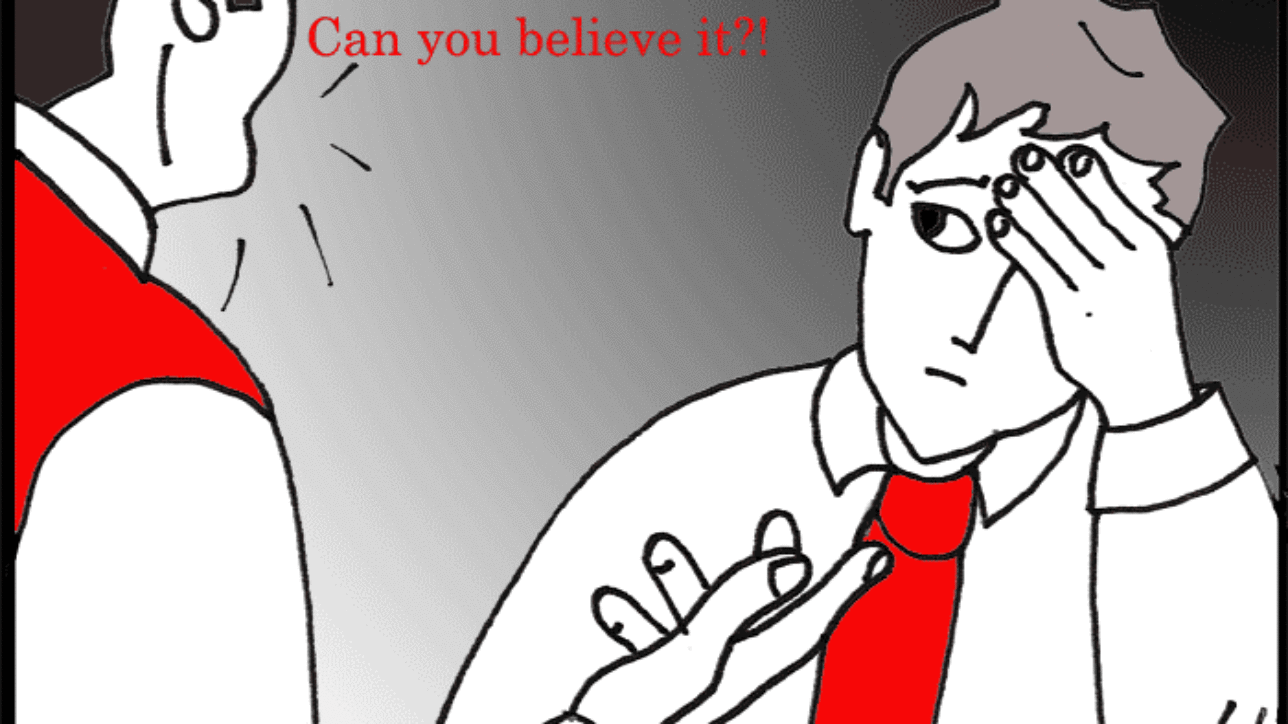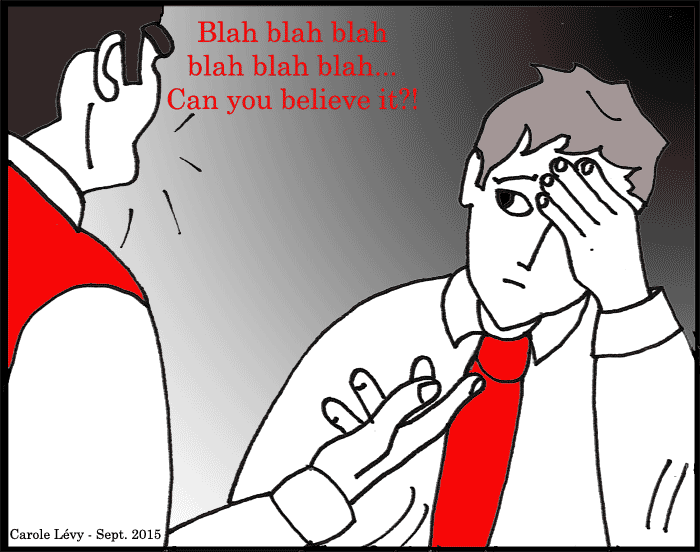I recently posted this blog on LinkedIn about responsibly venting at work. It was the fruit of a few experiences working with teams and small organizations, as well as venting memories with my colleagues. I thought I would share this article on my personal blog too, since I believe it could be the starting point of some useful conversations about creating safe work environments. Let me know your thoughts!
A common issue that comes up in all sorts of organizations is how to manage venting amongst team members. We all know what venting is about: we experience a bad feeling (annoyance, frustration, anger) in a certain situation that usually involves one or more people. Then we feel the need to release our discontent by sharing it with a third party. We’ve all done it. However, how one goes about venting can either support a culture or deeply damage it.
Three typical ways to vent
1. Thoughtless venting. We confusedly vent with no intention to harm, but no intention to solve either. Because of our norms to be “good people”, we don’t explicitly seek for allies (see #2 below); we seek for connection and understanding.
We mean no harm, but we are oblivious to the negative impact of venting without a clear goal.
We tend to reinforce assumptions – ours and those of our venting partners – instead of challenging them. These assumptions will almost inevitably turn into doubts, biases or evidence for future challenging circumstances. In the absence of clear and explicit organizational rules about venting, our ally becomes our consenting hostage, feeling flattered but stuck. That’s when venting leads to “triangulation issues”: A vents to B about C. C doesn’t know, because B doesn’t want to betray A’s trust. However, C always ends up hearing about the venting and feels betrayed by A and B. Triangulation issues create noise in the system, lingering bad reputations for certain team members and overall cynicism about the capacity of the organization to implement its values. In the worst-case scenario, triangulation leads to rumor that can lead inadvertently to scapegoating. This kind of venting is the most common in organizations.
2. Malicious venting. We vent with an explicit intention to blame and no intention to resolve any issue, since we think we are right and the other(s) wrong. We view the organization in camps. Venting allows us to feed our camp and perpetuate an “Us vs. Them” dynamic. It clearly damages the culture and often the deliverables, but at least it’s on the table. Unfortunately, this type of venting happens frequently in organizations.
3. Responsible venting. We let off steam and, at the same time, we seek for support with an intention to solve our problem. We choose a person that won’t indulge in our story or collude with us, but, if necessary, will help challenge our view of reality. This communication strategy allows us to re-center and take a constructive step forward for the good of our colleagues and the organization. Venting in this way is a non-issue. No harm, no baggage, more communication and more connection. It’s rare in organizations.
With either of the first two kinds of venting, the real issues don’t have a chance to be addressed or end up being poorly addressed. They leave a lot of residue in the culture, creating an environment of pervasive isolation, an “Us versus Them” rivalry, doubt, and cynicism.
How to vent responsibly
Venting is inevitable and human. Repetitive venting is almost inevitable too, since it’s not uncommon to develop sensitivities with certain co-workers and sometimes be caught in bad dynamics.
Practicing venting with responsibility can actually be essential to foster an open, safe, and self-reflective culture.
It can help to raise issues (structural, behavioral, or competency) that otherwise would be lingering, and to create an environment where relational dynamics don’t fester.
So here are a few tips about how to practice responsible venting:
- Acknowledge your agitation. Self-awareness is the starting point for re-centering. Take time to assess your level of agitation and your emotions before reaching out for a venting partner.
- Take an intention to understand/resolve your agitation – not to be right. Before reaching out for a venting partner, make sure to double-check your intention and ask yourself: “Am I seeking for allies to justify my point of view, or to expand my perspective?” If you’re not clear with your intention, don’t reach out to somebody at work. Reach out to a coach! That’s their job.
- Choose the right venting partner: Somebody with whom you can be vulnerable and acknowledge your agitation, can listen without fueling your story and will help you expand your perspective.
- Co-create a culture of No triangulation. No matter what your role is in the organization, you have a responsibility and an influence to foster responsible venting. If you’re the leader of the organization, set up a “No triangulation” rule. Have a discussion with your team to define together what it means in your organization.
Here is a model: If A goes to see B to vent about C, A knows that B will encourage A to have a conversation with C. If the situation is lingering, B has the right to let C know about A’s issue.
When there is still no resolution, your HR department might need to be involved. In the last organization we worked with (a small organization with no HR department), the leader established a clear rule: “If you need to vent, go see your supervisor. If the supervisor is the problem, come to see me”. If you’re not the leader of your organization, role-model a clear stand with venting: if you’re the “ventor”, declare your intention to responsibly vent and explore. If you’re a venting partner, allow yourself to refuse a conversation when the goal isn’t clear. It can appear harsh and inconsiderate on the surface, but it will position you as a person of integrity. Overall, it can save a culture.
Responsible venting is more demanding than thoughtless or malicious venting. It takes more time, determination and boundaries, but ultimately it creates deeper connections in an environment where people don’t have to worry about what others say behind their backs. It liberates a lot of creativity and team brainpower, while elevating the whole organization’s integrity.
How does your organization handle this issue? I’d love to hear about your experiences and deepen my approach.








